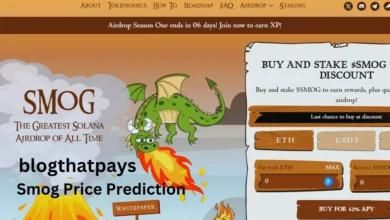What is Tokenomics: Comprehensive 2024 Overview

The success of any potential blockchain project relies upon establishing a strong structure. Various factors, including strong security features, a strong core development team, and workable use cases, can determine successful cryptocurrencies. Are you curious to know what is tokenomics? Tokenomics is an important factor that is frequently ignored in projects. Analyzing market dynamics, generating value, facilitating community participation, and aligning stakeholder incentives depend on an adequate tokenomics model.
One of the most important factors to consider when evaluating a cryptocurrency is the value of tokens. Determining the parameter can be difficult, particularly if the developers plan to launch the project and the digital coin has not yet been released. Investors consider a variety of factors in order to predict future price behavior. They must consider one’s functions, prospects, and personal qualities in addition to one’s possible placement among other coins. This collectively constitutes the cryptocurrency’s tokenomics.
What is Tokenomics?
Tokenomics, a hybrid of “token” and “economics,” is the field that studies the distribution, valuation, and demand for cryptocurrencies. Tokenomics studies all things associated with tokens, including their use, issuance, and burning. The subject is difficult and covers many areas of study.
Tokenomics is a field investors look into to see whether a token might be economically viable. The value of individual cryptocurrencies might decline over time if supply exceeds demand if demand is low. Inflation describes what’s going on here.
What is a Token?
A token is a kind of digital money that is either distributed for a particular purpose or used as payment on a particular blockchain. Many factors impact its demand, including the token’s versatility, security features, processing costs, and the government’s backing.
Regarding quantity, most cryptocurrency tokens have set plans for when they will be released. This way, buyers can guess how many tokens will be circulating at a certain time. The release rate and plans are very important when figuring out a token’s growth rate.
Main Features of Tokenomics
Let’s take a deeper look at the characteristics of a cryptocurrency that affect its demand and supply. A breakdown of Tokenomics’ features
Issuance
When you issue a crypto, you make a new one that didn’t exist before. When you study tokenomics, these are some important questions to think about:
- In what way is the token distributed?
- Does its blockchain use a specific voting mechanism?
- For this tokenomics study, let’s look at Bitcoin (BTC) and Ether (ETH).
The Bitcoin system uses proof-of-work (PoW) to get a judgment. New Bitcoin coins are created whenever a miner adds a new block to the system. Miners contribute to the Bitcoin supply at a predetermined pace.
On the other hand, the Ethereum blockchain uses a voting method called proof-of-stake (PoS). The validators lock up 32 ETH here to check transactions and make new blocks. At about 6-minute intervals, active validators are rewarded with freshly minted ETH according to their performance.
Tokens of other layer-one (L1) and layer-two (L2) types, like litecoin (LTC) and cardano (ADA), are issued in a way that is similar to how BTC and ETH are.
However, not every cryptocurrency uses a complex structure to generate new tokens; several projects make all their tokens at the beginning, or “genesis.” These cryptos are usually sold at the newest and most well-known ICOs.
Maximum Supply and Circulating Supply
Tokenomics says what maximum supply is and what is its circulating stock. A cryptocurrency can be made to have either a restricted or an unlimited amount.
However, Ethereum’s supply is limitless, while Bitcoin’s is limited to 21 million coins. Many see the coin as an insurance policy against price increases caused by inflation. It is also called “crypto gold” because so few of them exist.
Market Capitalization
The market capitalization of a cryptocurrency may be calculated by dividing its unit price by the total number of coins in circulation.
Distribution
Several crypto projects give thorough descriptions of how their tokens are distributed. These companies often give early investors and venture capitalists tokens to raise money. They also give tokens to the leaders and team members as rewards. The tokens could be given out in stages, with vesting and cliff times. For those who keep these tokens and decide to sell them on the market, the release of these tokens could change the price of a token.
Burning
Burning is moving cryptocurrency to a wallet address that can’t be found again, so it can’t be used anymore. Burning coins can help control inflation by lowering the number of them in circulation. Burning a token can be done in different ways for each token.
Projects can randomly or pre-selectively burn a certain proportion of their circulation supply. In some blockchains, like Ethereum, it is built to burn part of every transaction fee users pay. Not all cryptocurrencies, like Bitcoin, have ways to burn coins. It’s possible to add a fire feature to some, like Ethereum did with its “London upgrade” in August 2019.
Defi Incentives
On decentralized finance (DeFi) systems, users can earn money by putting their tokens in liquidity pools or holding pools and not using them. This step can change the number of tokens in circulation and make it less likely that people will want to sell them.
Utility
A token’s usefulness determines how much people want it, affecting its price, market value, and even the amount of tokens in circulation (in ETH’s case, because of gas fee burning). ETH is in high demand because it is used to pay Ethereum gas fees, for example. Users can’t buy NFTs, use DeFi sites, or play blockchain games on Ethereum if they don’t have ETH in their wallet to pay for things.
The need for a token can also be driven by investor guesswork. This is especially true when markets increase, and people buy cryptocurrencies to make money. The following are token applications: yield farming, staking, payments, governance, and collateralization.
Technical Aspects
Crypto can stand out from the rest because of technological differences. The number of new Bitcoins made with each block is cut in half every four years. This is called “halving” in the Bitcoin system. This splitting method ensures that BTC’s value goes down over time.
At the same time, the holding of ETH has led to more ETH funds lying around doing nothing. Many who stake ETH lock up more of it, so fewer tokens come onto the market. The lower supply on the market can cause ETH prices to go up.
Why Is Tokenomics Important?
Standard methods for figuring out the value of stocks don’t work perfectly with crypto investment. Because of this, buyers look at the tokenomics of a cryptocurrency before making a choice. Each cryptocurrency’s supply, issues, and technical factors affect its value. By looking at tokenomics, investors can find red signs, crypto projects that can’t be supported, and high-risk coins. Here are some important things to think about:
- What is the utility of the token?
- Does this cryptocurrency have a built-in market demand to survive the bear market?
- Is there a danger to investment due to the high concentration of tokens among founding members and early investors?
- Out of all these tokens, which one is more resistant to inflation?
Common Pitfalls and Red Flags in Tokenomics
There are a few red flags you should look out for whether you’re managing the tokenomics of your coin or thinking about investing in a different project:
- Unlimited/large token supply. At the very least, there should be a way to stop inflation if there is no limit on the total number of coins that can be made. If there are more tokens than people want, the tokenomics of a cryptocurrency can quickly go off the rails.
- Excess token liquidity. This can be a big problem if you’re a company selling cryptocurrency to investors and not keeping track of when your backers get their tokens. If too many owners vest at once and try to sell their tokens on a coin market, you may have too much volume, which can cause problems with your tokenomics.
- Market cap is very little or huge. The market capitalization is the amount of coins in circulation times the price of one coin on the market. A coin with a very small market share may be very volatile and have less liquidity. On the other hand, the most valuable cryptocurrencies (like Bitcoin and Ethereum) may be easier to buy and sell, but “stable” isn’t always a good thing in cryptocurrencies.
- Early distribution of tokens to investors: ICOs are like initial public offerings (IPOs) in the stock market. They are a way for a cryptocurrency to get money from early buyers. Early buyers should not be able to get the vast majority of tokens in circulation, as this suggests there aren’t many good ways to make new tokens.
- Too Many Reserves for Early Investors, Founders, and Team: Setting aside a large portion of the token’s supply for early investors, founders, or the team might raise concerns about control and market manipulation. These large purchases might undermine the token’s price and security, leading to unfair control and massive dumps.
- Unrealistic or Uncapped Hard Ceiling: A project that raises money without a clear cause or has no hard ceiling may be greedy or mismanage money.
- Guaranteed Profits: Any enterprise that promises to pay you money back is a warning sign for a Ponzi scheme or other scam.
- Lack Clear Roadmap: Projects should have a roadmap that outlines funding, growth, and future ambitions. An imprecise or absent outline may indicate that you haven’t planned or thought about what to accomplish.
- Suppose the project often changes its token metrics, assignments, or other critical components of the project without sufficient cause. In that case, it may be unstable or lack a defined purpose.
- Lack of Clarity or Complex Distribution Mechanisms: Tickets should be distributed clearly. A difficult sharing method may indicate that things aren’t being told the truth or that unfavorable terms are disguised.
- TOKEN’S PURPOSE IS UNCLEAR: A ticket with no obvious purpose is a major red flag. If a project can’t explain why, it needs a token or how it benefits the community, the token may raise money.
FAQs
What is Tokenomics?
Tokenomics, a combination of “token” and “economics,” is the area of study that looks at the supply, demand, and distribution of cryptocurrencies. The study of tokens, including their issue, usage, and burning, is known as tokenomics. The topic is challenging and encompasses a wide range of topics.
What is a Token?
A token is a kind of cryptocurrency that may be used to make payments on a specific blockchain or issued for specific purposes. The demand of the token is influenced by several aspects like as its government support, processing costs, security features, and adaptability.
Conclusion
People interested in blockchain technology need to understand what tokenomics means in Web3. Tokenomics is a part of the economic and reward systems that build a blockchain network and control how its coins are used. Users can better understand how tokens work and why they’re important by learning about the main concepts of tokenomics, like how tokens are distributed, governed, and used.
Tokenomics lets people join and benefit from blockchain networks. It is important to ensure these networks can stay alive and grow. So, anyone who wants to trade in, use, or build blockchain-based projects needs to understand the idea of tokenomics.







One Comment